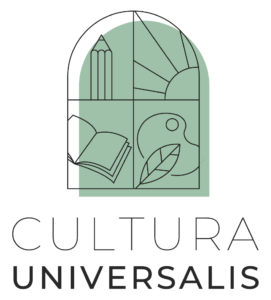 |
Globalization has brought a wide range of cultures in closer contact than ever before. Europe itself is a context of great cultural diversity (Catarci, 2014). On the other hand, the practice of intercultural dialogue is the tool for constructive exchanges and an essential element of equality in our societies (UNESCO (2013), Intercultural Competences). Intercultural competence is culture-general and could be defined as a set of abilities, attitudes and skills that allow one to appropriately and effectively manage relations with persons of different linguistic and cultural backgrounds (Portera, 2014). The lack of such an important competence presents challenges which often initiate perceptions of anxiety and confusion causing “diversity stress” or “diversity tension”. Research shows that IC is not a naturally occurring phenomenon but a lifelong process which needs to be addressed explicitly in learning, teaching and staff development (Deardorff, D.K. 2006) and to be developed throughout life, starting from early age onwards (World Economic Form & Boston Consulting Group, 2015). Moreover, It has been clearly documented that prosocialness is developed from infancy through late childhood and early adolescence, “arising from complex developmental and psychological processes, involving attentional and evaluative processes, moral reasoning, social competence, and self-regulatory capacities” (Caprara & Pastorelli, 1993; Eisenberg & Fabes, 1998; Krebs & Van Hesteren, 1994 in Caprara et. al, 2005). The long tradition of cultural and language homogeneity in several European education systems has resulted in stiff national educational policies that face adjustment difficulties. In fact, in many cases this has led to the isolation of immigrant students in schools (Catarci, 2014). This results in a twofold negative impact, where immigrants do not have the opportunity to integrate within the host-country and native-borns do not get familiar with changing patterns nationally and worldwide. By applying the principles of IC in education, the opportunity to minimize intolerance, cultural discrimination and xenophobia arises. Moreover, adopting and teaching IC in schools is in tune with peace education and conflict management (Portera, 2014). In this context, art becomes a valuable tool. The main objective of this project is to develop a collection of creative culture-based activities workshops and an interactive online game to enhance intercultural competence through art in pupils 7-14 years old. The target group is chosen for two reasons. Firstly, children’s character and potential is still developing, thus their receptiveness in different stimuli is wider. Secondly, children are growing up to a globalised world, being prepared for an environment, jobs and technologies that are now formulating or do not even exist yet. As discrimination and xenophobia are getting stronger, they receive conflicting and damaging signals that become inhibitory factors to their development. Our partner countries’ situation review confirmed the correctness of our intention to develop this project. Migrants in Latvia and Poland are rather few (4,7% and almost 5% respectively) with a noticeable upward trend. Yet, locals’ attitude towards them is largely negative. Immigration evokes negative feelings for 86% of Latvian inhabitants (Eurobarometer) and 57% of Polish believe they are better off living in a homogenous society (Pew Research Center, 2017). On the other hand, immigration is high in Greece (roughly 11%, UN data), Spain and France (11,8%, Eurostat) sparking similar negative feelings. In 2018, 74% of Greeks said immigrants are viewed as a burden on their country (Pew Research Center). Spaniards include immigration among their three main problems (CIS Barometer, 2020) while French are mostly divided (Pew Research, 2019). Whether largely homogenous or diversity-stressed, all partner societies seem to lack the skills mentioned above which indicates the stimuli channeled towards children. In fact, we found no similar to our proposal project in any partner countries that combines art, culture and gamification with IC and prosocial competence. Moreover, the transnational element inherent to our proposal is of crucial added-value as it shifts the focus of culture from being exclusively national or ethnic, which may lead to social alienation or nurture feelings of superiority (OECD, 2013), to an open mindset, able to understand and value culture and art as a human-centric. Indeed, even though the needs have been identified based on the partner countries’ situation, the same problems exist across the EU, and the project outputs are relevant at EU level. The results produced will be prone to be carried out in other EU countries, due the availability in a few languages, including English. The last, with a larger geographical coverage, will ensure wider dissemination and exploitation potential, being in line with the RIGA Conclusions 2015. |
